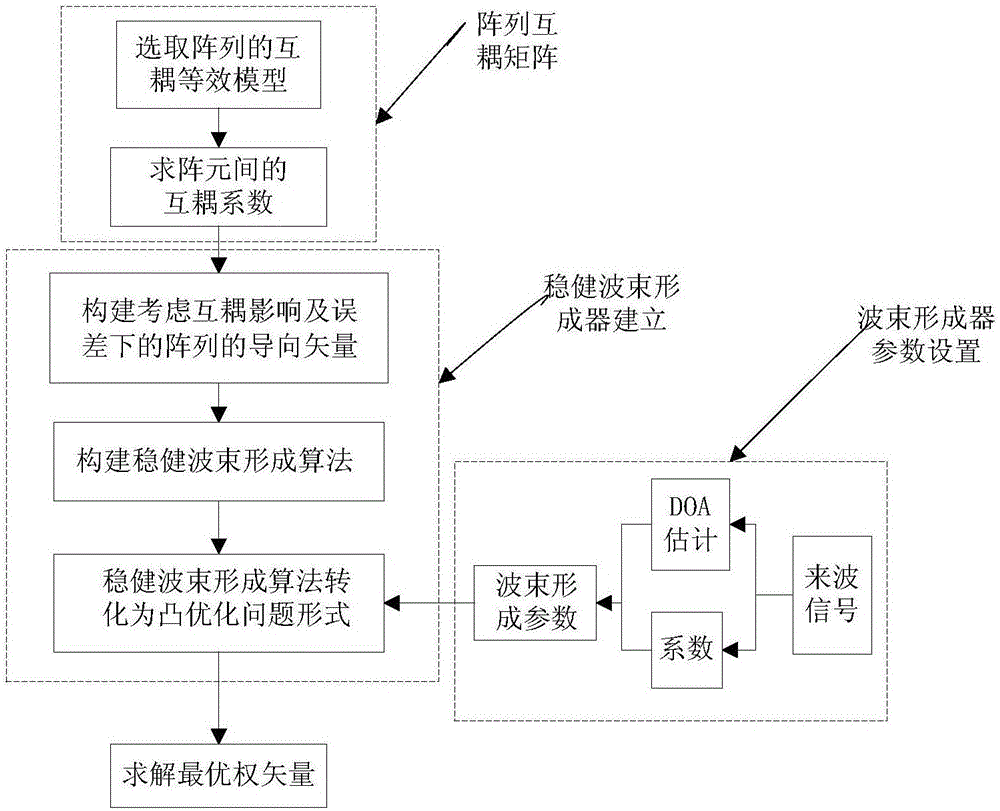Low-sidelobe robust adaptive beamforming method
An adaptive beam and low side lobe technology, applied in radio wave measurement systems, instruments, etc., can solve the problems of beamformer output signal-to-interference-noise ratio decrease, wave arrival direction error, etc., to achieve anti-interference reduction and anti-mobile interference Effect
- Summary
- Abstract
- Description
- Claims
- Application Information
AI Technical Summary
Problems solved by technology
Method used
Image
Examples
Embodiment Construction
[0050] Now in conjunction with embodiment, accompanying drawing, the present invention will be further described:
[0051] figure 1 is the overall flowchart of the robust low sidelobe beamformer of the present invention, such as figure 1 shown, including the following steps:
[0052]Step S100, first, according to the array form, find the mutual coupling coefficient between array elements and establish a mutual coupling equivalent model;
[0053] Step S200, constructing a robust beamforming algorithm with low sidelobes
[0054] Step S300, selecting the parameters of the beamformer
[0055] Step S400, obtain the optimal weight vector corresponding to the array.
[0056] The invention realizes the two purposes of low sidelobe and null trapping to interference while ensuring the robustness of the adaptive beamformer. When the side lobe level coefficient is selected too large, the effect of the array on zero will be reduced, and if the side lobe level coefficient is selected t...
PUM
 Login to View More
Login to View More Abstract
Description
Claims
Application Information
 Login to View More
Login to View More - R&D
- Intellectual Property
- Life Sciences
- Materials
- Tech Scout
- Unparalleled Data Quality
- Higher Quality Content
- 60% Fewer Hallucinations
Browse by: Latest US Patents, China's latest patents, Technical Efficacy Thesaurus, Application Domain, Technology Topic, Popular Technical Reports.
© 2025 PatSnap. All rights reserved.Legal|Privacy policy|Modern Slavery Act Transparency Statement|Sitemap|About US| Contact US: help@patsnap.com



